Chitralekha Basu was pleasantly surprised to find the virtues of a slow and well-considered approach being celebrated at the just-concluded Digital Art Fair 2023.
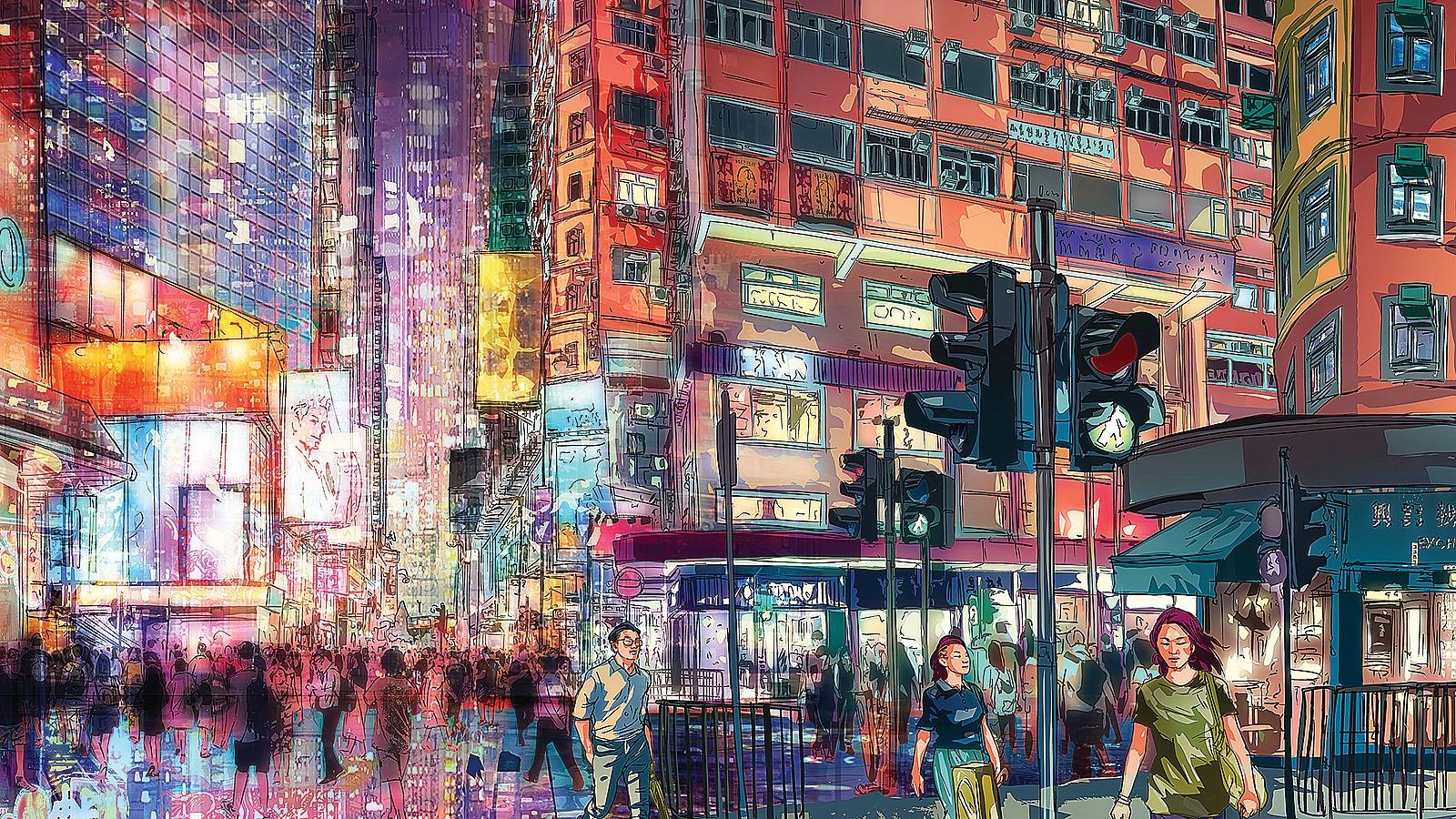 A monumental digital installation, Take Your Time by Jonathan Jay Lee, serves as the highlight piece of Digital Art Fair 2023. Replete with much-loved generic elements of Hong Kong, such as trams, neon signs and tenement buildings, the piece invites viewers to invest time and pay close attention in order to seek out and enjoy the details that may not be apparent at first glance. (CALVIN NG / CHINA DAILY)
A monumental digital installation, Take Your Time by Jonathan Jay Lee, serves as the highlight piece of Digital Art Fair 2023. Replete with much-loved generic elements of Hong Kong, such as trams, neon signs and tenement buildings, the piece invites viewers to invest time and pay close attention in order to seek out and enjoy the details that may not be apparent at first glance. (CALVIN NG / CHINA DAILY)
In a way, the latest edition of Hong Kong’s annual Digital Art Fair, which concluded on Monday, was its own antithesis. Taking place at a time when, increasingly, artists are embracing artificial intelligence, more often than not because it’s not humanly possible to match AI in terms of speed, it was a bit of a pleasant surprise to find the fair — whose raison d’etre is to showcase the best and the latest of technological innovations in art — choose a work that was all about celebrating the value of slowing down as its highlight piece.
We’re talking of Jonathan Jay Lee’s monumental installation, Take Your Time. Measuring 6 by 3 meters, the mammoth artwork is replete with some of Hong Kong’s much-loved generic features that might be on their way to slow extinction — trams, bilingual neon signs extending into the pavement, tenement buildings with conical facades located at the fork of a road.
 A monumental digital installation, Take Your Time by Jonathan Jay Lee, serves as the highlight piece of Digital Art Fair 2023. Replete with much-loved generic elements of Hong Kong, such as trams, neon signs and tenement buildings, the piece invites viewers to invest time and pay close attention in order to seek out and enjoy the details that may not be apparent at first glance. (CALVIN NG / CHINA DAILY)
A monumental digital installation, Take Your Time by Jonathan Jay Lee, serves as the highlight piece of Digital Art Fair 2023. Replete with much-loved generic elements of Hong Kong, such as trams, neon signs and tenement buildings, the piece invites viewers to invest time and pay close attention in order to seek out and enjoy the details that may not be apparent at first glance. (CALVIN NG / CHINA DAILY)
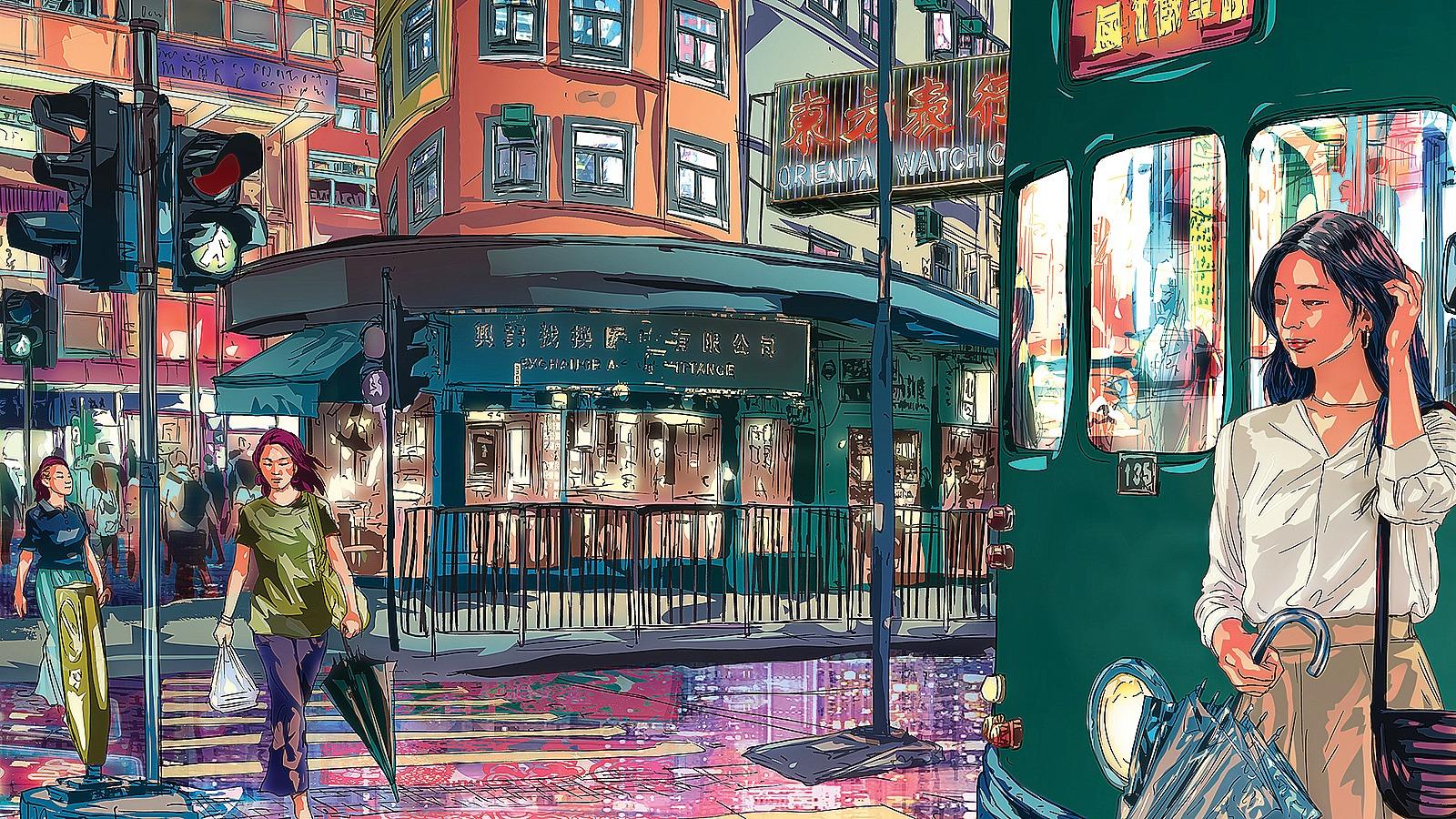 A monumental digital installation, Take Your Time by Jonathan Jay Lee, serves as the highlight piece of Digital Art Fair 2023. Replete with much-loved generic elements of Hong Kong, such as trams, neon signs and tenement buildings, the piece invites viewers to invest time and pay close attention in order to seek out and enjoy the details that may not be apparent at first glance. (CALVIN NG / CHINA DAILY)
A monumental digital installation, Take Your Time by Jonathan Jay Lee, serves as the highlight piece of Digital Art Fair 2023. Replete with much-loved generic elements of Hong Kong, such as trams, neon signs and tenement buildings, the piece invites viewers to invest time and pay close attention in order to seek out and enjoy the details that may not be apparent at first glance. (CALVIN NG / CHINA DAILY)
The digital mural’s charm lies in its animated bits. Blink and you might miss the lone drop of rain making a ripple on the rain-washed street, the couple of feathers shimmying down on to the ground, or a lock of hair on the woman in the foreground flicked back by the breeze. The message is clear — certain things in life, including looking at a piece of art, can’t be rushed.
Sponsored by the time-tested Hong Kong brand Oriental Watch, Take Your Time invites viewers to find delight in the minutiae of day-to-day existence. The piece “also reflects my own pace at this time,” says the artist, who often rides a Hong Kong tram to observe life on the streets. It took him a considerable length of time, trying to figure out the elements he wanted to include in his amazingly detailed digital mural, and there’s nothing he would like more than his viewers showing a similar commitment by “coming back to it to find newer things”.
 Metahuman artist MonoC’s digital installation, Rhapsody in Bloom, is based on kinetic data sourced from the activities of the guests staying at Rosewood Hong Kong in March. (CALVIN NG / CHINA DAILY)
Metahuman artist MonoC’s digital installation, Rhapsody in Bloom, is based on kinetic data sourced from the activities of the guests staying at Rosewood Hong Kong in March. (CALVIN NG / CHINA DAILY)
Calm during a storm
Also trying to make the moment last is Henry Chu. His twin cube-shaped digital sculptures, called Last Minute, are meant to be a lighthearted dig at his own inability to meet his wife’s expectations.
Chu has used his signature floral motif to create a one-minute countdown. The words “I’m almost done” — a reference to what the artist usually tells his wife when she reminds him that it’s late and he should have been back home a long time ago — appear every other second.
Interestingly, the countdown is never completed. The digital display resets every 55 seconds. “I wanted to express the feeling of being perennially chased by something or the other, having to keep pace with the newest technological developments perhaps,” Chu says.
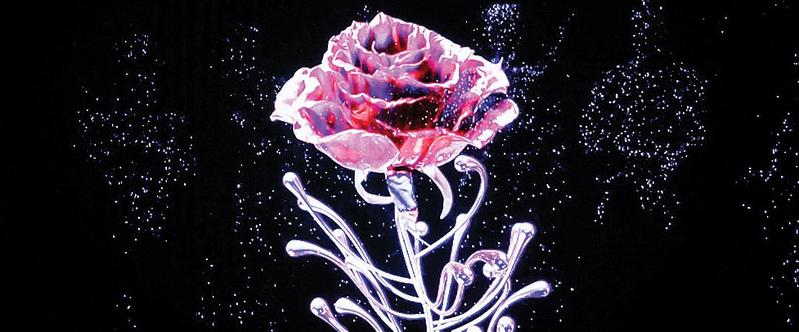 Metahuman artist MonoC’s digital installation, Rhapsody in Bloom, is based on kinetic data sourced from the activities of the guests staying at Rosewood Hong Kong in March. (CALVIN NG / CHINA DAILY)
Metahuman artist MonoC’s digital installation, Rhapsody in Bloom, is based on kinetic data sourced from the activities of the guests staying at Rosewood Hong Kong in March. (CALVIN NG / CHINA DAILY)
His other piece at the fair is an attempt to capture “a moment from a scene in nature, presented in miniature”. Called Waterfall Piano: Calm During the Storm, the interactive digital sculpture borrows both its theme and some of its components from the ravages caused by Hong Kong’s most-recent typhoon.
Comprising a keyboard and a row of strip lights cascading down from it, the piece “represents a mini rainstorm”. The big chunks of stone halting the “flow” of the strip lights across the floor are sourced from the wreckage caused by Typhoon Koinu. For days after the storm was over, the debris lay scattered across the street, until Chu decided to bring some of it home to be included in his work.
A recording of the rainstorm serves as the default audio. “But you can stop it by playing on the instrument,” says the artist. “You don’t need to know how to play the piano; just hit any key, and you will find the colors of the rainbow flowing down the LED light strips, to the sound of calm, soothing music.”
 Bianca Tse pays homage to the human stories hidden under the grungy exteriors of Kowloon Walled City in her video installation, Walled City, Wildest Dreams, by adding elements of fantasy to harsh reality. (CALVIN NG / CHINA DAILY)
Bianca Tse pays homage to the human stories hidden under the grungy exteriors of Kowloon Walled City in her video installation, Walled City, Wildest Dreams, by adding elements of fantasy to harsh reality. (CALVIN NG / CHINA DAILY)
City of contrasts
Tucked away in a corner of the fair’s Virtual Zone, dedicated to data-based projects, was Bianca Tse’s homage to Kowloon Walled City. What used to be one of Hong Kong’s most-intensely populated human settlements, equally well-known for its poverty and lawlessness, is given a poetic lift into the realm of fantasy in Tse’s video installation.
Tse took her cues from the book City of Darkness Revisited by Greg Girard and Ian Lambot, containing a huge number of photographs documenting life in the largely ungoverned enclave, observed up close, until its very last days in 1993, when the enclave was demolished by the local government.
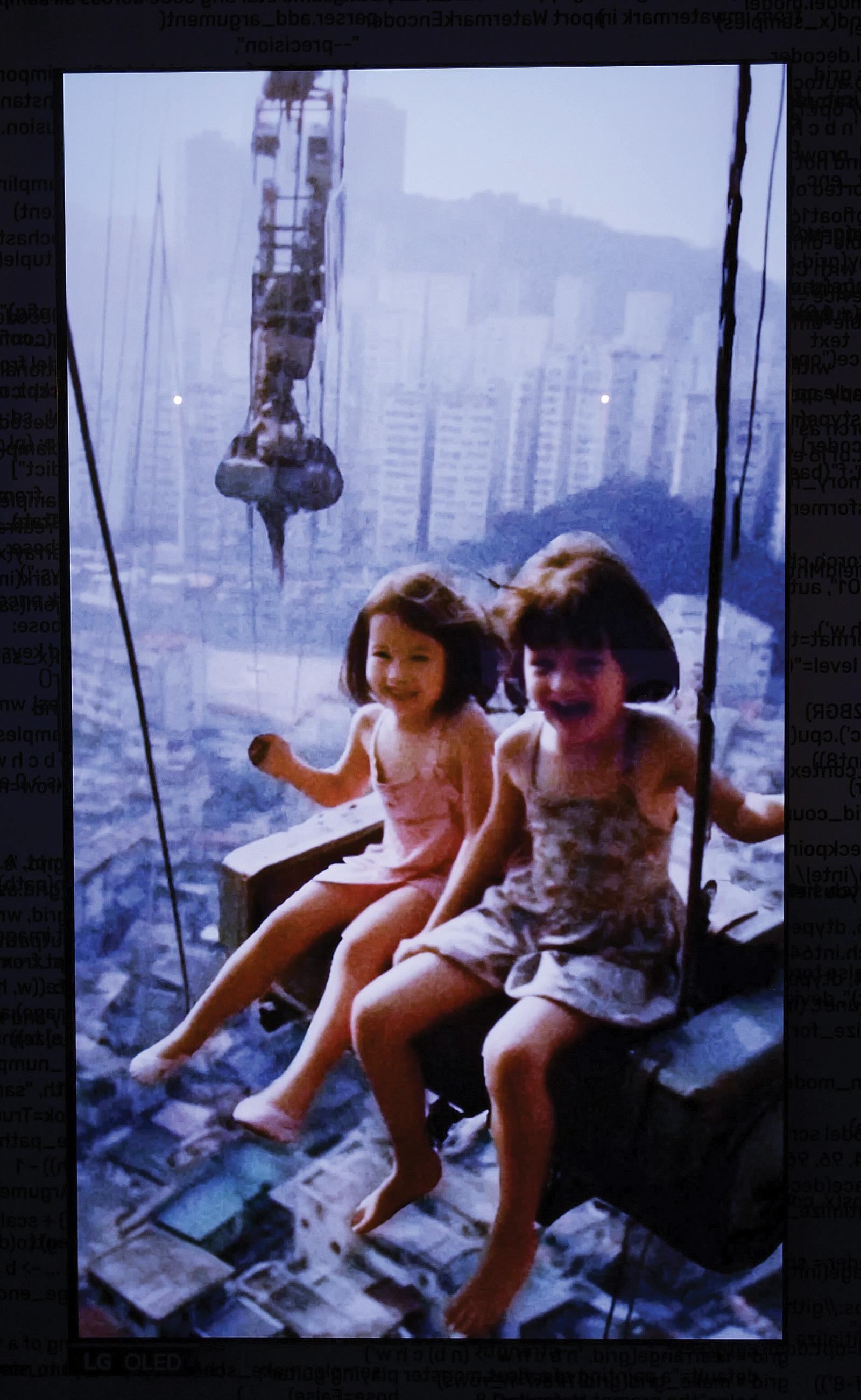 Bianca Tse pays homage to the human stories hidden under the grungy exteriors of Kowloon Walled City in her video installation, Walled City, Wildest Dreams, by adding elements of fantasy to harsh reality. (CALVIN NG / CHINA DAILY)
Bianca Tse pays homage to the human stories hidden under the grungy exteriors of Kowloon Walled City in her video installation, Walled City, Wildest Dreams, by adding elements of fantasy to harsh reality. (CALVIN NG / CHINA DAILY)
“Additionally, I leveraged the power of AI machine learning and big data to reimagine and illustrate my visuals, infusing them with contemporary insights and fresh perspectives,” says the artist.
The result is a video awash with a riot of vivid, fluorescent colors — the somewhat lurid pink on building walls and deep purple worn by rows and rows of uniformed men accentuating the grunginess and the squalor of the neighborhood.
Tse says the idea “was to create a visual and emotional contrast”.
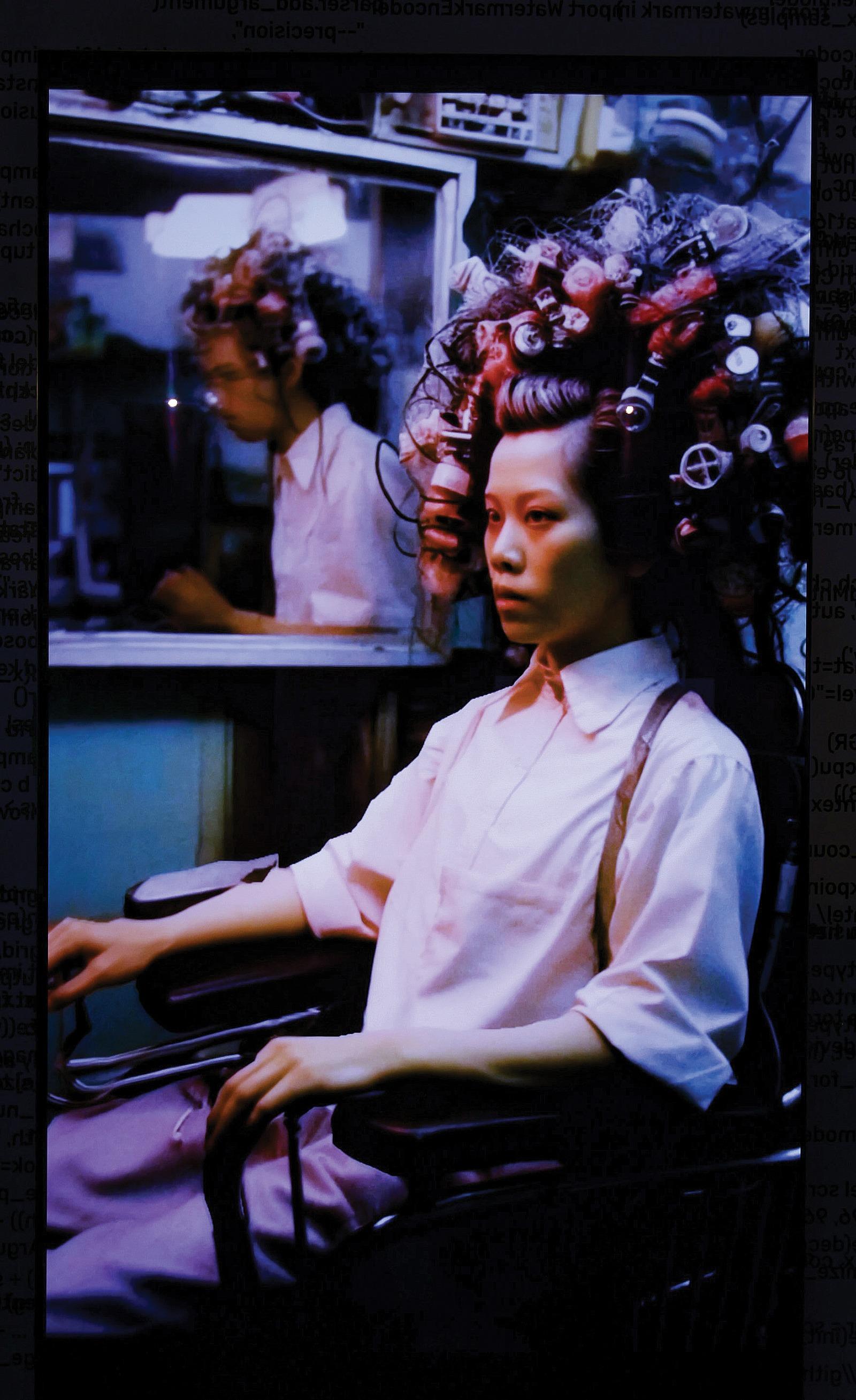 Bianca Tse pays homage to the human stories hidden under the grungy exteriors of Kowloon Walled City in her video installation, Walled City, Wildest Dreams, by adding elements of fantasy to harsh reality. (CALVIN NG / CHINA DAILY)
Bianca Tse pays homage to the human stories hidden under the grungy exteriors of Kowloon Walled City in her video installation, Walled City, Wildest Dreams, by adding elements of fantasy to harsh reality. (CALVIN NG / CHINA DAILY)
“The juxtaposition of vibrant colors and the famously chaotic, gritty urban environment helps to draw the viewer’s attention — enabling me to interpret and reimagine the city in a way that is fresh,” she adds.
One of the most heart-warming images in the piece is that of a crummy aircraft hovering over a cluster of ill-maintained terraces, surrounded by high-rises, with Walled City children perched atop its roof, enjoying the ride.
“It’s a way of highlighting that there were human stories, relationships and moments of beauty within the chaotic exteriors that might have been overlooked,” says Tse. “I hope to encourage viewers to see the city from a different perspective, one that aligns more with its historical significance than its gritty reputation.”
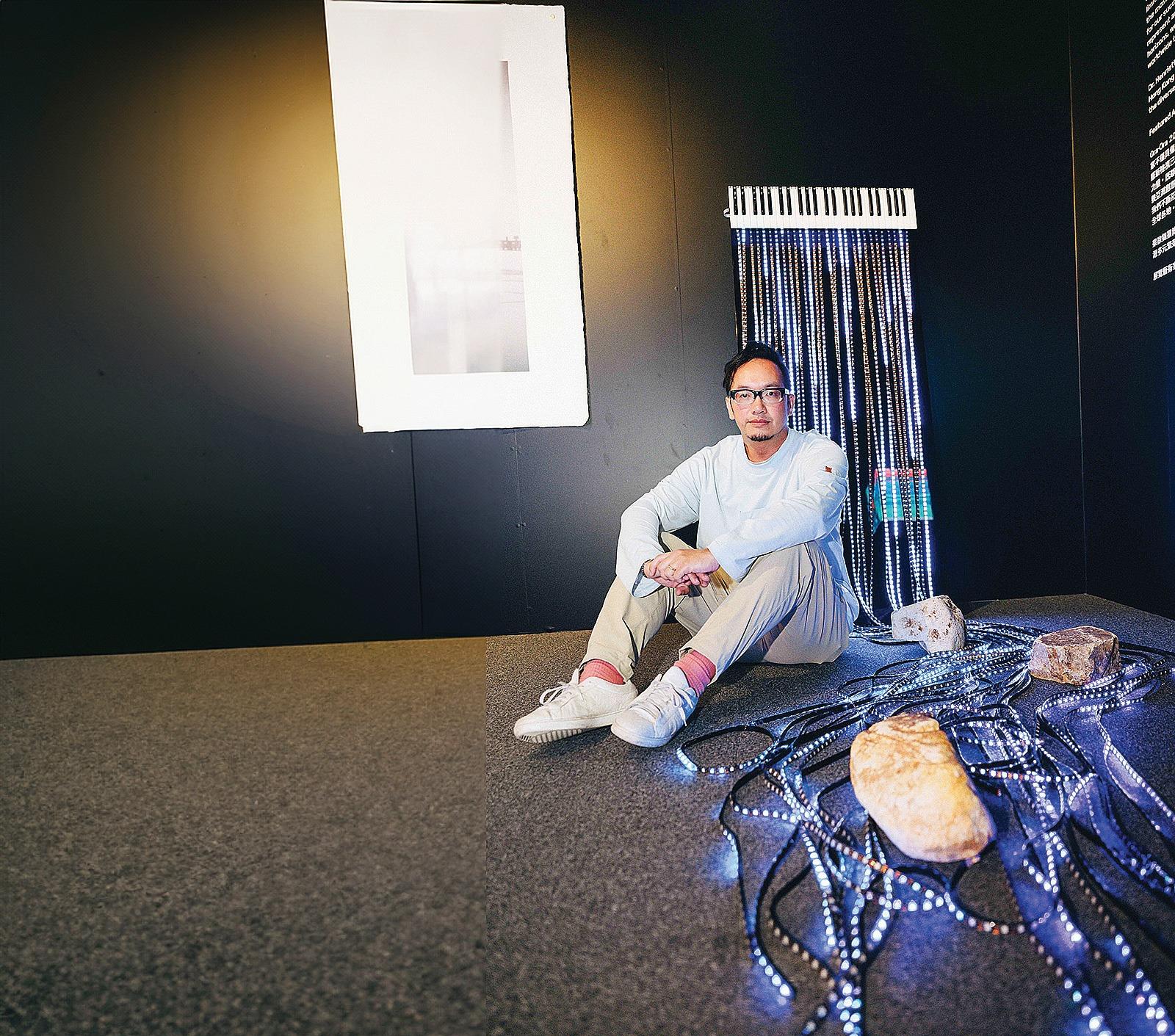 Henry Chu’s interactive Waterfall Piano: Calm During the Storm allows viewers to manipulate the audio-visual experience. Chu’s cube-shaped Last Minute sculptures include a cheeky reference to his own inability to finish work on time. (CALVIN NG / CHINA DAILY)
Henry Chu’s interactive Waterfall Piano: Calm During the Storm allows viewers to manipulate the audio-visual experience. Chu’s cube-shaped Last Minute sculptures include a cheeky reference to his own inability to finish work on time. (CALVIN NG / CHINA DAILY)
AI comes of age
Back at the fair, following last year’s showing of her COVID-19-themed digital artwork, Corona Florella, was the “metahuman artist” MonoC. The brainchild of Gusto Collective — a global consortium of specialists in “technology-powered storytelling”, founded in Hong Kong in 2020 — MonoC presented Rhapsody in Bloom, a digital installation commissioned by Rosewood Hong Kong and based on the kinetic data sourced from the activities of the hotel’s guests in March.
The project was launched in the immediate aftermath of the local government lifting its COVID-19-related mask mandate. The freedom from having to wear masks in public after 945 days had a noticeable impact on the guests’ social behavior, which formed the basis of MonoC’s artwork.
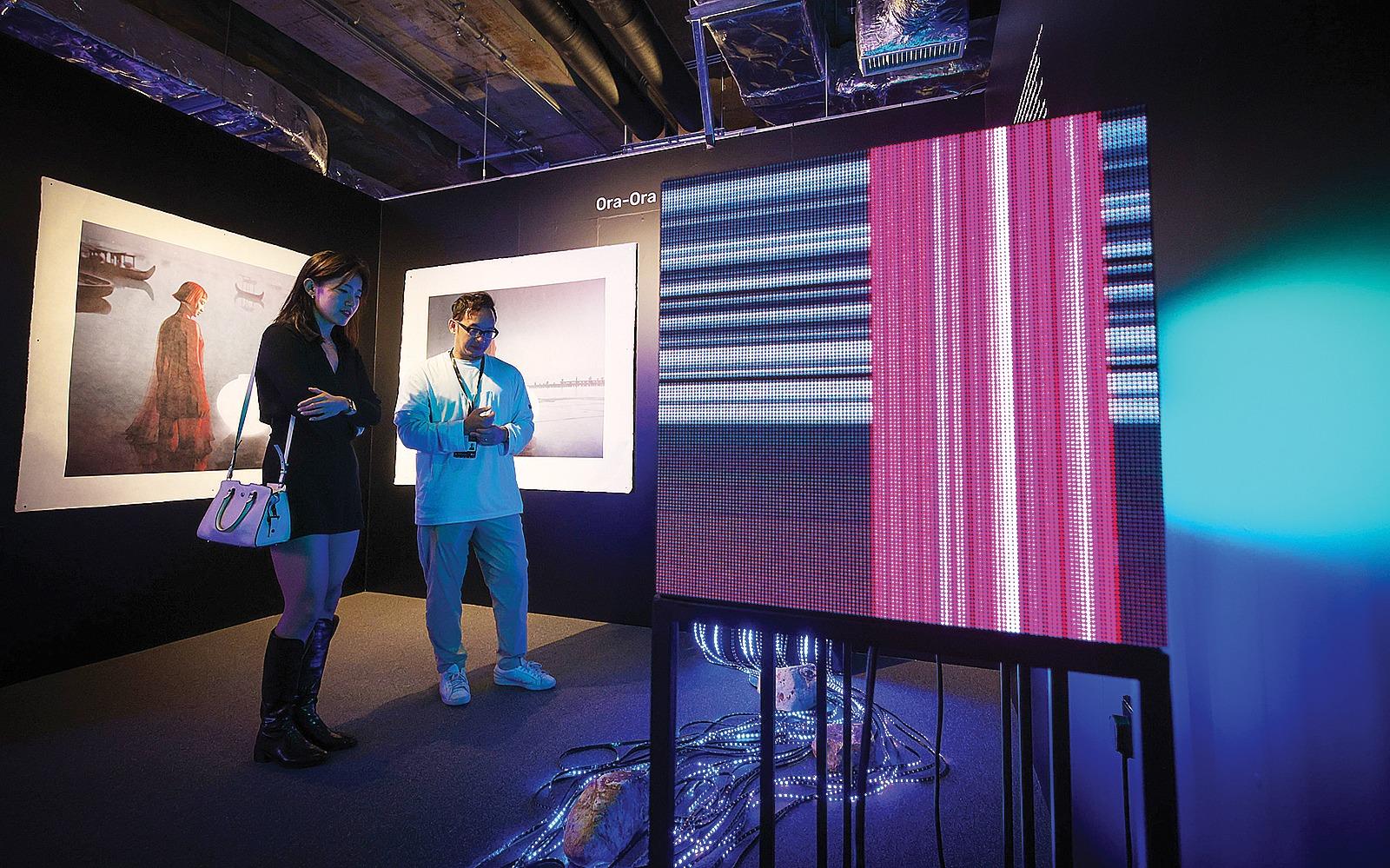 Henry Chu’s interactive Waterfall Piano: Calm During the Storm allows viewers to manipulate the audio-visual experience. Chu’s cube-shaped Last Minute sculptures include a cheeky reference to his own inability to finish work on time. (CALVIN NG / CHINA DAILY)
Henry Chu’s interactive Waterfall Piano: Calm During the Storm allows viewers to manipulate the audio-visual experience. Chu’s cube-shaped Last Minute sculptures include a cheeky reference to his own inability to finish work on time. (CALVIN NG / CHINA DAILY)
“It was a live co-created piece of artwork, inviting audiences to explore the topics of community and collaboration,” says Gusto Collective’s managing director, Caroline York. “The message is a direct reflection of Hong Kong’s resilience, coming together after the pandemic to rebuild society.”
Has MonoC matured as an artist over the past year? Between Corona Florella, in which the flowers growing on leafless stalks look like monster heads with multiple beady, green eyes, and Rhapsody in Bloom, which also has a blooming flower, a rose, as its main image, but unfolds like a visual symphony, there seems to have been a tonal shift.
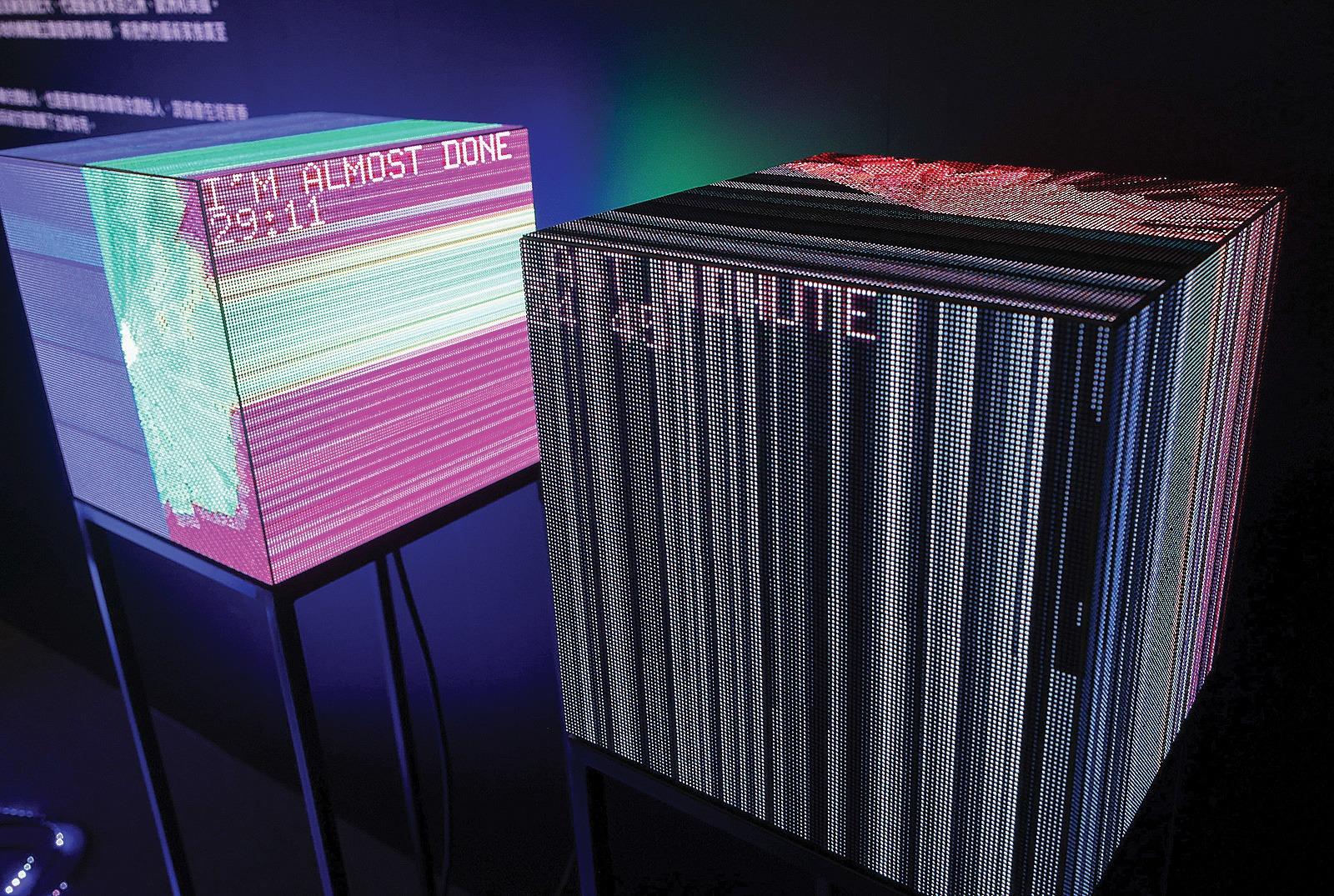 Henry Chu’s interactive Waterfall Piano: Calm During the Storm allows viewers to manipulate the audio-visual experience. Chu’s cube-shaped Last Minute sculptures include a cheeky reference to his own inability to finish work on time. (CALVIN NG / CHINA DAILY)
Henry Chu’s interactive Waterfall Piano: Calm During the Storm allows viewers to manipulate the audio-visual experience. Chu’s cube-shaped Last Minute sculptures include a cheeky reference to his own inability to finish work on time. (CALVIN NG / CHINA DAILY)
York agrees. “The shift towards a slower rhythm and a more understated style could be seen as a response to a collective yearning for introspection, contemplation, and a break from the overwhelming sensory overload often associated with contemporary digital art. MonoC’s art may provide a counterbalance, inviting viewers to engage in a more reflective and nuanced experience,” she says.
She hastens to add, however, that such a shift is only a phase in the evolution of MonoC’s artistic abilities. “Just as the collective data she absorbs is subject to changes over time, it is entirely possible that her artistic expression may take on different characteristics in the future. Such fluidity ensures that her art remains relevant and resonant in an ever-changing world.”


